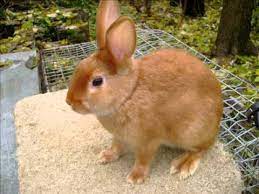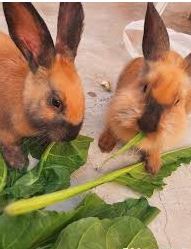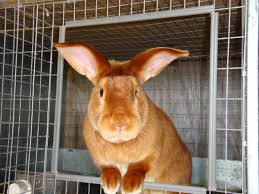Everything You Need To Know About Satin Rabbit
The origin story of the Satin Rabbit is quite interesting. It is a breed that can trace back to Havana. Initially, a breeder from Indiana named Walter Huey tried to find new ways to improve the Havana rabbits he already had. In a specific litter, he was able to breed a different type of Havana rabbit. Huey sent some of the rabbits to Harvard University for testing because they had a distinctive appearance.
Harvard geneticists successfully identified that Walter Huey’s rabbit was the result of a genetic mutation. A recessive gene in the Havana Rabbit appeared to be the cause of this rabbit’s coat’s different shine and texture. In that regard, they still considered this rabbit to be a simple mutation of the Havana Rabbit breed.
However, when Huey introduced the one-of-a-kind specimen in the rabbit world compared to the Havana, experts and other breeders could not accept that it was simply a Havana with a mutation. As a result, the National Havana Club identified the rabbit as a Satin Havana variety. The American Association of Havana Breeders then sponsored breeders to produce new colors of this unique and new rabbit breed.
Originally, the Satin Rabbit was only available in one color. However, since its breeding has been promoted and sponsored by concerned associations seeking to increase this breed’s numbers, there are now many different colors for this rabbit. The ARBA officially recognizes black, a combination of white and other colors, chinchilla, chocolate, blue, otter, red, and Siamese Satin Rabbit colors.
Does Satin Rabbit make good pets?
 These rabbits are gentle and polite, making them suitable for children. These rabbits appear to be friendly, calm, and relaxed in general. Since it is sociable but not overly active, having this type of rabbit is not a problem for any owner. Satin rabbits have a friendly temperament. It is essential to spend time with them.
These rabbits are gentle and polite, making them suitable for children. These rabbits appear to be friendly, calm, and relaxed in general. Since it is sociable but not overly active, having this type of rabbit is not a problem for any owner. Satin rabbits have a friendly temperament. It is essential to spend time with them.
These rabbits should train from the youngest age. This rabbit is not a pet rabbit to keep in a cage because this species of rabbit requires you to accompany it outside the cage. Satin rabbits are difficult to train, but they make excellent pets for children, couples, and families.
What does Satin Rabbit eat?
 Satin Rabbits specifically require a special diet to keep the sheen and texture of their unique coats. On the other hand, this rabbit can thrive when fed the same diet as most other domesticated breeds of rabbits. Consider it to be a Havana Rabbit with a unique coat.
Satin Rabbits specifically require a special diet to keep the sheen and texture of their unique coats. On the other hand, this rabbit can thrive when fed the same diet as most other domesticated breeds of rabbits. Consider it to be a Havana Rabbit with a unique coat.
Hay should always be the Satin Rabbit’s primary source of nutrients. Moreover, they also should be fed a diet consisting of 70% hay, which is high in fiber and difficult to chew. To help with digestion problems, any rabbit requires a high fiber intake. Furthermore, since a rabbit’s teeth never stop growing, allowing them to chew on hay decreases the possibility that their teeth will overgrow.
The remaining 30% of these rabbits’ usual calorie intake should combine leafy greens, vegetables, fruits, and rabbit pellets applicable at pet stores. Always keep an eye on the greens and vegetables we feed these rabbits because some could harm their health. Also, avoid giving these rabbits sugary vegetables and fruits because these pets are not well-suited to digest large amounts of sugar. Try to stay on the low side of things and give these Satin Rabbits high-sugar vegetables and fruits only on occasion.
How big is a Satin Rabbit?
 Satin rabbits range in size from medium to large. Satin rabbits are smaller in the UK, weighing about 2.7-3.6kg (6-8lbs), and the largest in the US, weighing about 3.6-5kg (8-11 lbs). Satin rabbits are medium-sized animals with a broad, arched body, strong legs, a broad head, and sturdy, upright ears.
Satin rabbits range in size from medium to large. Satin rabbits are smaller in the UK, weighing about 2.7-3.6kg (6-8lbs), and the largest in the US, weighing about 3.6-5kg (8-11 lbs). Satin rabbits are medium-sized animals with a broad, arched body, strong legs, a broad head, and sturdy, upright ears.
Is Satin Rabbit aggressive?
Satins are very mild-mannered pets due to their breeding from the ever-popular Havana. Their size makes them docile and friendly, though we should exercise caution when introducing them to other animals. Handle them frequently and early in their lives, and they will enjoy being groomed and held for the rest of their time together. Thus, we can assume that the Satin rabbit is not aggressive at all.
What’s the average lifespan of a Satin Rabbit?
Satin rabbits are not the strongest breeds and will not live for long. Their lifespan is compared to other domestic species, which can live for up to 5 years or a little longer. However, if they are properly protected and cared for, they can live for seven years.
Since these are indoor pets, they must supplement their vitamin D levels artificially. Despite the best care and nutrition, these rabbits will never live to be ten. These rabbits have a maximum life span of 7 to 9 years.
How fast does Satin Rabbit grow?
The Satin Rabbit has the same reproductive habits as any other domesticated rabbit. It will most likely be ready for breeding when it reaches sexual maturity, between 4 and 6 months. Because of the short gestation period of these rabbits, they can give birth multiple times in a single year. Of course, they could even give birth to a litter of 2 to 6 rabbits, just like most other mammals.
How do you bond with a Satin Rabbit?
 Satin Rabbits have a personality pretty much identical to Havana rabbit or any other domesticated rabbit breed. Compared to shy rabbit types who are not used to a domesticated lifestyle, the Satin Rabbit has a personality and demeanor that is well-suited for a domesticated lifestyle. It will not mind living under its owner’s care shy when we try to socialize with it. In that sense, we can anticipate it to have a friendly, calm, and easy-going demeanor. This type of rabbit will not be a problem for any owner because it is sociable but not overly hyperactive.
Satin Rabbits have a personality pretty much identical to Havana rabbit or any other domesticated rabbit breed. Compared to shy rabbit types who are not used to a domesticated lifestyle, the Satin Rabbit has a personality and demeanor that is well-suited for a domesticated lifestyle. It will not mind living under its owner’s care shy when we try to socialize with it. In that sense, we can anticipate it to have a friendly, calm, and easy-going demeanor. This type of rabbit will not be a problem for any owner because it is sociable but not overly hyperactive.
We must spend our time socializing with them because of their friendly personality. That means it should not be a pet that we keep in its enclosure or cage for long periods, as this rabbit breed requires us to spend some time with it outside of its cage. Putting it after removing it from its enclosure is a fantastic way to socialize with this breed. We can also introduce it to our children and other domesticated animals suitable for socializing with our Satin Rabbit.
Final thought
The rabbit breeding industry is no stranger to random events. Rabbits are constantly surprising and delighting us with new colors, textures, and styles due to their frequent breeding. If a shiny, friendly, docile pet appeals to us, we should consider adopting a Satin.
https://www.rabbitproducersassociation.com/satin-rabbit/https://www.rabbitproducersassociation.com/wp-content/uploads/2021/07/Satin-Rabbit.jpghttps://www.rabbitproducersassociation.com/wp-content/uploads/2021/07/Satin-Rabbit-150x150.jpgUncategorizedThe origin story of the Satin Rabbit is quite interesting. It is a breed that can trace back to Havana. Initially, a breeder from Indiana named Walter Huey tried to find new ways to improve the Havana rabbits he already had. In a specific litter, he was able to...FatimahFatimah ftmhuda@gmail.comAuthorNetherland Dwarf Rabbit


Leave a Reply